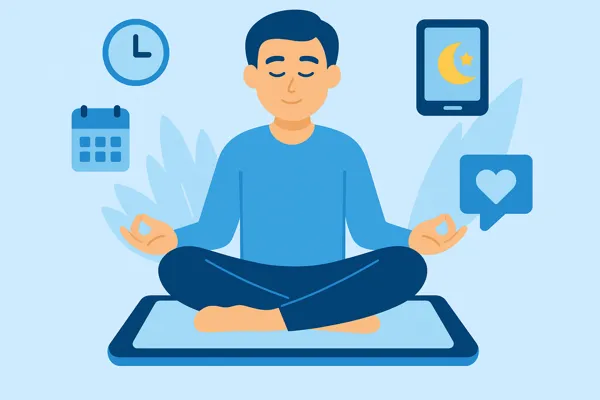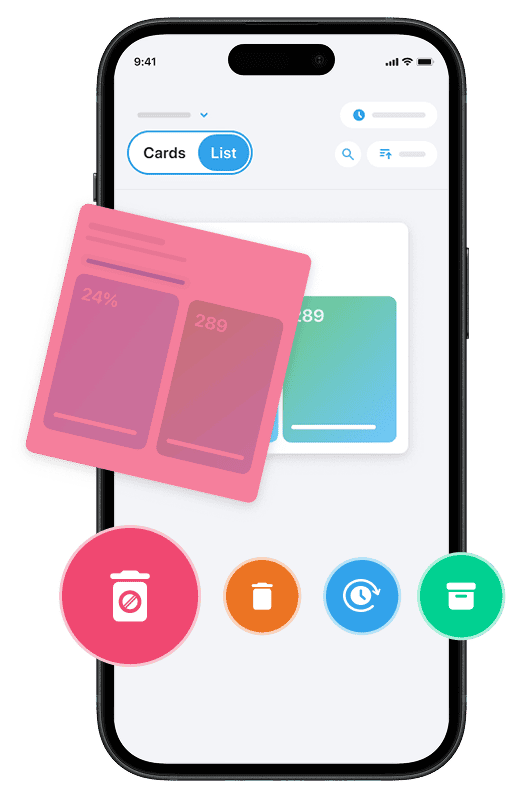In today’s world, the constant presence of your smartphone and social media apps can easily lead to media addiction, which negatively impacts both your mental and physical health. Many young people check their phones dozens of times daily, often spending five or more hours on digital media. This habit can disrupt sleep quality and reduce overall life satisfaction. A phone detox offers a powerful way to cut down on screen time, break free from smartphone addiction, and regain control over your wellbeing and social life.
In just seven days, a focused digital detox can help you reset your mind, improve mental health, and reduce phone-related anxiety. It can also enhance physical health outcomes affected by excessive technology use. And if you want to go a step further in building healthier digital habits, check out our guide to the Digital Sabbath — a simple one-day weekly reset that helps you fully disconnect and recharge.
Ready to reclaim your time and improve your health? This guide provides step-by-step tips for managing social media usage and minimizing technology’s grip on your life.
And if you’re serious about cutting screen time, start with your inbox. Cleanfox helps you eliminate spam and unnecessary emails in just a few clicks — so you can stay focused, feel lighter, and make space for what really matters.
Day 1: Prepare and Plan
Set Your Intentions
Before diving into your phone detox, take a moment to set clear and meaningful intentions. Are you looking to improve your sleep quality, reduce mental fatigue caused by constant social media apps, or simply regain control of your time? Defining your goals not only keeps you motivated but also makes it easier to stick to your plan when the temptation to check your smartphone arises.
Consider how your current phone hours and social media usage impact your mental and physical health, and commit to realistic changes that will boost your life satisfaction and overall well-being.

Notify Your Contacts
Letting your friends, family, and colleagues know about your digital detox is an important step. A quick message or status update can set expectations so people understand if you don’t respond immediately to messages or calls. This also reduces any anxiety about missing out or seeming disengaged from your social life.
Notifications from social networking sites can otherwise trigger your phone addiction and undo your efforts. Clear communication creates a supportive environment and can even encourage others to consider their own screen time habits.
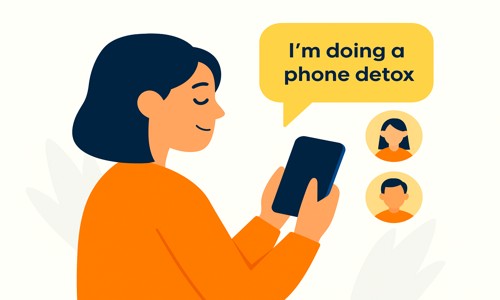
Download Necessary Tools
To support your detox journey, consider installing apps that help monitor and limit your smartphone screen time. Many tools offer features to block or track social media use, giving you insights into your daily phone hours and helping break addiction patterns. Alternatively, set your phone to silent or do-not-disturb mode to prevent constant notifications from interrupting your focus.
Say goodbye to spam, clutter, and chaos.
Our smart email cleaner filters out junk, organizes your inbox, and helps you focus on what really matters.
✅ Block spam automatically
✅ Organize emails by priority
✅ Keep your inbox clean
✅ Clean old emails you don’t read
📱 Available on the App Store and Google Play.
With these digital detox tools at hand, you can better manage the physical and mental health challenges linked to media addiction and technology overuse.
Day 2-3: Implement Initial Reductions
Designate Phone-Free Hours
Now that you’ve set your intentions and prepared your environment, it’s time to carve out specific periods in your day when your phone will be completely off-limits. Start small by designating one or two phone-free hours, preferably during times when you typically find yourself mindlessly scrolling through social media apps. These phone-free hours allow you to reclaim moments for activities that boost your mental and physical health, such as reading, exercising, or spending quality time with loved ones.
Establishing these boundaries interrupts the cycle of addiction and helps reduce your overall screen time, giving your brain a much-needed break from digital media overstimulation.
Disable Non-Essential Notifications
Notifications from social media, messaging apps, and other digital platforms can continuously pull you back into phone usage, often disrupting your focus and draining your mental energy. On days two and three, disable all non-essential notifications so you’re not constantly triggered by pings and alerts. This simple action helps you regain control over when and how often you check your smartphone, reducing anxiety linked to the addictive pull of social networking sites.
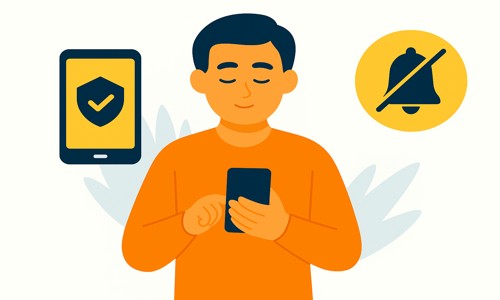
By limiting interruptions, you create a calmer digital space, which supports better sleep quality and overall mental health as your mind enjoys fewer distractions throughout the day.
Day 4-6: Deepen the Detox
Limit Checks
By days four through six, it’s time to significantly reduce how often you check your smartphone. Aim to constrain phone use to just a few specific times daily, rather than grabbing it reflexively every few minutes. This helps break the cycle of social media addiction and phone addiction that often hijacks your attention without you realizing it.
Using built-in screen time tracking or apps designed to bolster self-control can remind you when you’ve hit your limits and encourage you to take a break. Less frequent checks also reduce the mental clutter and stress tied to constant notifications, letting you focus more on the present moment and improving your mental health.
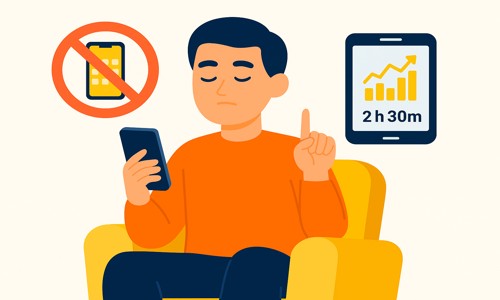
Engage in Phone-Free Activities
Replace the time you’d usually spend on social media apps or scrolling through your feed with enriching phone-free activities. Consider reading a physical book, going for a walk, practicing mindfulness, or pursuing a hobby that keeps your hands and mind busy without a screen.
These activities improve both mental and physical health by reducing eye strain, anxiety, and sedentary behavior associated with lengthy screen time. Engaging in the real world helps you reconnect with life beyond technology and strengthens your ability to enjoy your day without dependence on digital media.

Reflect on Your Experience
Take time each day of this deeper detox phase to reflect on how your phone detox is affecting you. Notice changes in your mood, sleep quality, stress levels, and life satisfaction. Journaling can be a useful tool to track your feelings and observations, helping you connect the dots between reducing phone hours and improved wellbeing.
Reflection not only reinforces your commitment but also highlights benefits you might have overlooked, motivating you to continue with your digital detox and make healthier habits stick long term.

Day 7: Evaluate and Adjust
Assess Your Mental and Emotional State
On the final day of your phone detox, take a thoughtful inventory of how your mental and emotional wellbeing has changed throughout the process. Reflect on whether your anxiety levels, mood, or sleep quality have improved as a result of reduced phone hours and decreased social media usage. Many studies have shown that limiting screen time can alleviate symptoms of depression and enhance emotional regulation, especially in young people who are most vulnerable to smartphone addiction.
Consider journaling your experiences to identify the benefits you’ve noticed, such as greater mental clarity, reduced stress, or improved life satisfaction. Recognizing these positive changes helps reinforce the value of maintaining healthier technology habits moving forward.
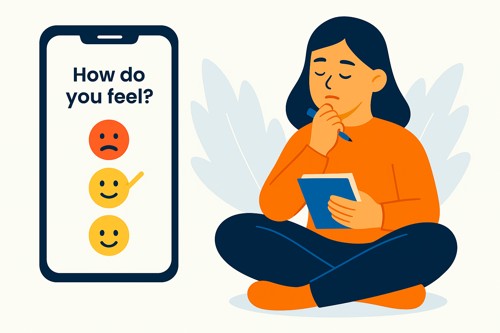
Plan for the Future
Now that you’ve experienced the benefits of a digital detox, it’s important to create a sustainable plan to avoid slipping back into old patterns of digital addiction. Decide which detox strategies worked best for you—whether it was phone-free hours, disabling notifications, or engaging in alternative activities—and incorporate them into your daily life. Setting weekly or monthly mini detoxes can help maintain your gains and keep smartphone and social media usage in balance.
Additionally, consider continuing to use digital detox tools or apps to monitor and limit your screen time as part of a long-term strategy to protect your mental and physical health. By planning ahead, you empower yourself to foster a healthier relationship with technology and enhance your overall wellbeing.
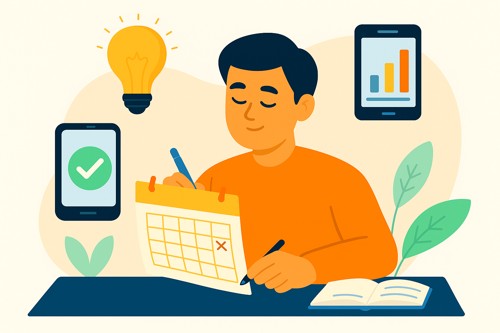
Conclusion
Remember, a phone detox is a highly effective way to tackle smartphone addiction, boost your mental and physical health, and elevate your overall life satisfaction. By thoughtfully preparing, setting clear boundaries, and immersing yourself in phone-free activities, you can reset your relationship with technology and reclaim control over your time. The rewards include better sleep, reduced stress, and deeper social connections.
Make a commitment to regular digital detoxes and leverage useful tools to maintain healthier habits. Taking action today not only helps you manage screen time but also fosters lasting wellbeing in our fast-paced digital age.
FAQ
How can a 7-day phone detox improve my mental health and well-being?
A 7-day phone detox can significantly improve your mental health by reducing anxiety, depression, and the constant dopamine fluctuations caused by excessive phone use. It also enhances sleep quality by limiting exposure to blue light, boosts mental clarity, and fosters stronger real-world connections. Additionally, it increases productivity and improves self-esteem by minimizing social media comparisons.
What practical steps should I follow each day during a 7-day phone detox?
During a 7-day phone detox, follow these practical steps:
- Set clear goals for the detox and notify your contacts about your plan.
- Turn off non-essential notifications and designate device-free zones in your home.
- Schedule specific phone-use times to maintain balance.
- Gradually delete distracting apps and avoid social media.
Conclude the detox with a full-day phone fast to reset your habits and recharge.
How do I manage anxiety or discomfort that arises from reducing phone use during the detox?
Managing anxiety or discomfort during a phone detox can be achieved through the following strategies:
- Engage in offline activities like hiking or reading to distract yourself.
- Set clear boundaries by using “Do Not Disturb” modes and informing friends about your detox.
- Replace phone use with physical alternatives, such as journaling.
- Consider therapy for additional coping strategies if needed.
Gradual reduction and the support of accountability partners can also help ease withdrawal symptoms.
What are some effective strategies to maintain phone detox habits after completing the 7-day reset?
To sustain the benefits of your phone detox, try these effective strategies:
- Implement realistic limits, such as tech-free evenings or reduced screen time.
- Delete distracting apps permanently and establish consistent device-free periods.
- Reflect on the positives you experienced during the detox.
- Use tracking apps to monitor your phone usage and replace screen time with enriching activities like hobbies or exercise.
Found this helpful? Keep building your Healthy Digital Habits with our guide: Inbox Overload — 7 Email Routines That Actually Work. Explore more tips like this on our blog!


